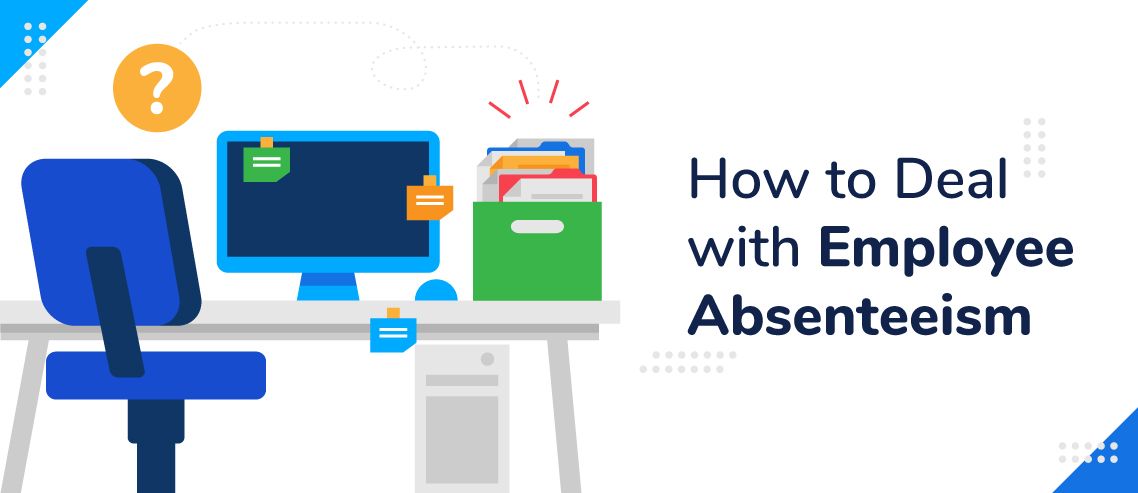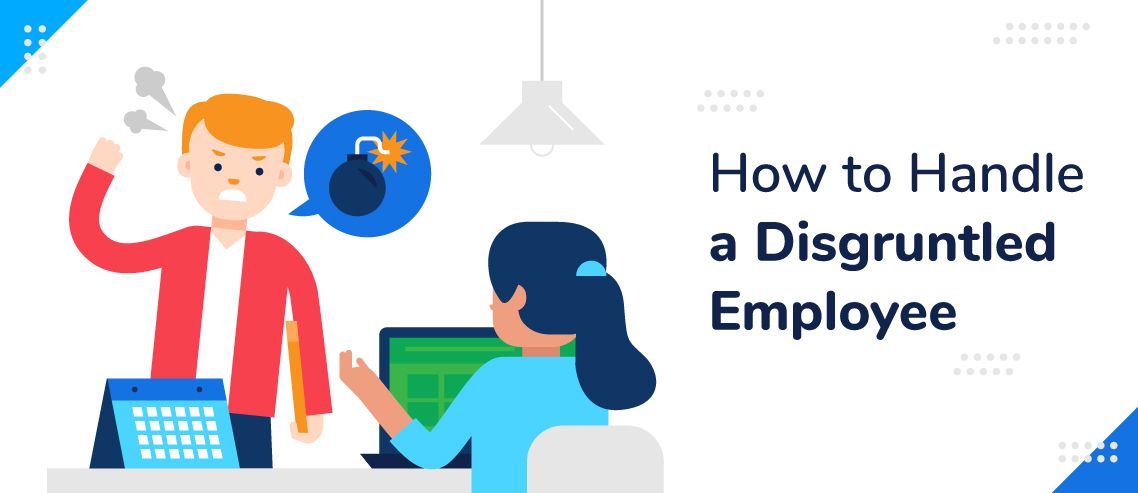How to Deal with Employee Absenteeism

In 2019, the employee absence rate across the US stood at an average of 2.8% on any given day. While many of these workers will have a good reason for staying away from work – such as illness or emergency – much of this figure will comprise employee absenteeism.
So what is employee absenteeism, and how is it different from other forms of paid leave?
Put simply, absenteeism is the practice of staying from work without a good reason. The United States’ absence rate may sound like a small percentage, but this level of employee absence takes a significant toll on business productivity.
Think about it.
If you have a workforce of 300 team members, a 2.8% absence rate means you can expect approximately eight to be absent on any given day – with much of these absences being unplanned and last minute.
So not only are you losing the productivity of these eight people, but their colleagues’ productivity will also be hit as they scramble to work out what they need to cover.
This is why it’s vital for every business to have a plan to drive down employee absenteeism. Not all absences can be prevented – people are going to get sick and family emergencies happen – but by tackling absenteeism, you can lower the overall absence figure.
Here’s how to deal with employee absenteeism.
Lay Down the Law With an Employee Attendance Policy
It’s difficult to blame employees for engaging in absenteeism if you haven’t set out your expectations.
The size of your business doesn’t matter here – whether you employ five people or 5000, an employee attendance policy clearly shows staff what they can and can’t do while in your employment.
That said, the rules contained in this policy will vary from business to business.
For example, some employers will be fine with their staff members turning up an hour late in the morning, as long as they make that time up by staying an hour late. In this case, a late arrival of under one hour would not be counted as an absence.
However, for others – particularly in industries that involve shift work – coming into work an hour late will be a huge issue that needs to be counted as an absence.
To be effective, your employee attendance policy should be part of every new hire’s onboarding, every manager must be trained in it, and it must be consistently enforced.
Record Absences and Analyze at the Data
A large part of making your employee attendance policy a success is recording absences and looking at trends.
For instance, if an employee is regularly calling in sick on a Friday morning, it could be because they attend a “thirsty Thursday” drinking event and often wake up hungover on Fridays. By identifying such trends, you can take appropriate action where you spot something suspicious.
Establish a Solid Process for Sickness Leave
If employees believe they can get away with taking days off by pretending to be sick, many of them will. That’s just the way the world works. This is why it’s essential to have a clear and thorough process for recording sickness leave that all employees must stick to.
Such processes tend to involve sickness forms the employee must fill in, explaining the absence, and a back to work chat with their manager too. In cases of longer absences, a doctor’s note should be required as well.
In the case that their explanation for the absence is not satisfactory, this can trigger a disciplinary process or change their performance plan.
If employees know they will have to go through a closely-monitored process as a result of their day off, they’re less likely to do it in the first place – unless they genuinely have a good reason for their absence.
This process must be clearly laid out in the employee attendance policy, and every manager should ensure it is followed to the letter.
Reward and Reinforce Good Behavior
While businesses don’t want to encourage presenteeism – where employees come into work despite being sick – it is good practice to reward good behavior.
Reward options include:
- One extra day of vacation leave for a 100% attendance record at the end of the year
- Awards such as gift cards at the Christmas party for good attendance
- Bonuses for employees with an 100% attendance record, or a percentage of that bonus for those with high attendance records
It’s also important that managers regularly communicate their appreciation for consistent attendance – a thank you goes a long way.
Create a Cover Plan for Every Employee
However much you work on your absenteeism rates, employees will continue to be absent from work – both for legitimate and less legitimate reasons.
So when it comes to dealing with absenteeism, cover should be a big part of the plan.
Preparing for these absences means that when they do happen, the employee’s manager and colleagues will know exactly how to proceed, and the business as a whole will lose less productivity.
Ask every employee to create a cover cheat sheet that explains exactly what their daily or weekly tasks and duties are, and to keep this updated as their role evolves. Furthermore, ensure their manager has access to their work inbox and files, should they need to access them while the employee is off work.
This cheat sheet should be shared with their managers and their teams. Each manager should also have a shortlist of employees who could cover each team member as part of their clear cover action plan.
Have you found employee absenteeism to be a problem in the past? How did you go about tackling it? Share your experience with us in the comments.
JD enjoys teaching people how to use ZoomShift to save time spent on scheduling. He’s curious, likes learning new things everyday and playing the guitar (although it’s a work in progress).





